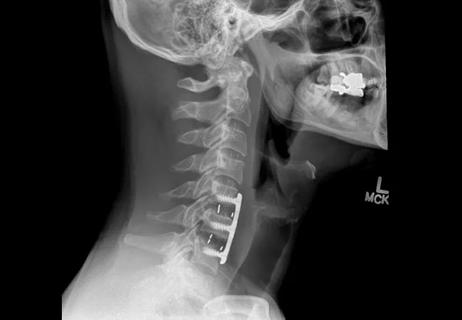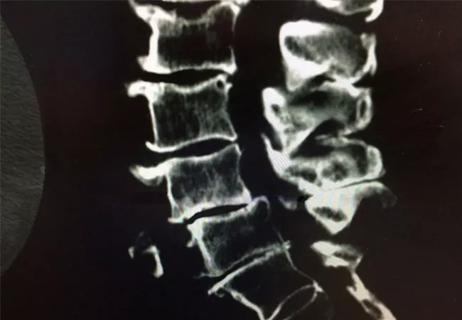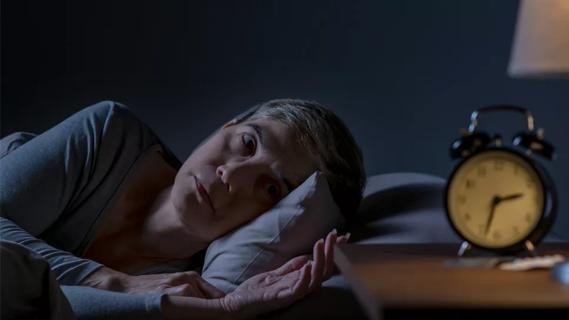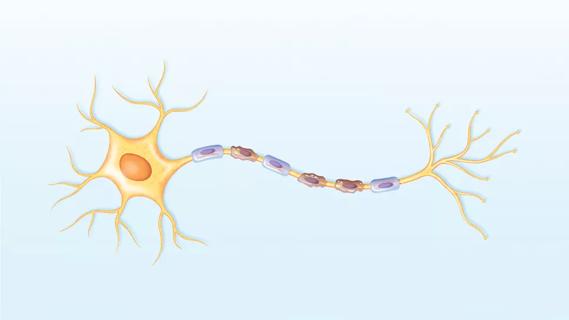A preview of Cleveland Clinic’s emerging AI platform for spine care decision-making

In 2015, a team of innovators in Cleveland Clinic’s Center for Spine Health launched an initiative to take on harmful heterogeneity in spine care by harnessing artificial intelligence (AI) to optimize care around standardized best practices. Led by spine surgeons Thomas Mroz, MD, and Ghaith Habboub, MD, the team collaborated with Cleveland Clinic Innovations, which works with inventors to develop ideas for clinical innovations and bring them to clinical use.
Cleveland Clinic is a non-profit academic medical center. Advertising on our site helps support our mission. We do not endorse non-Cleveland Clinic products or services. Policy
The result of the initiative — an AI platform to guide clinical decision-making in spine care — is now nearing clinical implementation at Cleveland Clinic. Drs. Mroz and Habboub, together with neurosurgeon Michael Steinmetz, MD, Director of the Center for Spine Health, recently spoke with Cleveland Clinic Magazine about the initiative. This article is an adaptation of that conversation for healthcare professionals.
Q: Tell us about the origins of this AI platform.
Dr. Mroz: I saw the gaps in spine care. The heterogeneity across the country is well documented. Surgeries for one particular problem can be disparate, for a lot of reasons. If a patient has lumbar spinal stenosis, they should be getting one surgery. It should be consistent because we should be doing the absolute best thing for a patient, regardless of where they are entering the healthcare system, anywhere in the nation.
At the same time, I also saw an opportunity to better utilize the advanced computing that we now have at our fingertips. We have capabilities that few people even dreamed about 50 years ago. There’s so much data about every patient in their electronic medical record.
My goal was to use advanced computing to analyze a comprehensive set of data points, in real time, to provide a more meaningful encapsulated vision of a patient and to help us make the best decision for improving the quality of care while driving down the cost.
Dr. Habboub: I was still a resident when the project began. It grew out of a series of conversations. Dr. Mroz and I talked all the time about the future of spine care. Could we sum up all these patient characteristics in a way that would tell us a story about the patient and help us make a better decision about care? Dr. Mroz was senior staff. I was a trainee. But we shared a vision.
Dr. Steinmetz: I have been involved more or less from the beginning. My role has been to provide clinical perspective. I’m a sounding board for the pragmatic application, asking questions like, “How do we do this?”
Q: Exactly what is AI-guided spine care?
Dr. Mroz: It’s a decision-making tool to help us predict which intervention is going to result in the best outcome for a given patient. It can tell us a patient’s chances for meaningful improvement if they have surgery. If surgery isn’t the best option, it can suggest a different care pathway that will be more advantageous for the patient. It’s precision medicine.
Dr. Habboub: The innovation is a modular algorithm. It’s complex enough to get the job done, but it’s also the simplest it can be to get the job done. That’s the principle known as Occam’s razor.
Dr. Mroz: For us, the biggest turning point was developing a quantifiable method to judge a patient’s outcome. We came up with something called the utilization metric. Essentially, it’s a mathematical formula that looks at everything that happens to a patient after surgery: How many office visits and phone calls? How many imaging studies? And so on. We look at all these factors to determine whether an outcome was successful.
Dr. Steinmetz: Everybody was talking about big data. But what does that really mean, and what do you do with it? Dr. Mroz had the foresight to say, “We can use this in a meaningful way.” That was a light-bulb moment. He had this big idea, and Dr. Habboub had the technical expertise to pursue it. He’s a savant, a self-taught expert who really understands artificial intelligence and machine learning.
After the project was launched, it took the better part of two years to navigate the necessary internal reviews and approvals. Then the team created a beta model. They named it HAL, after the supercomputer in 2001: A Space Odyssey. Additionally, a philanthropic gift provided critical funding to engage an external partner with healthcare data expertise to engineer the collected data in the ways the team wanted to use it.
At the 2018 annual meeting of the Congress of Neurological Surgeons, the team presented a preview of their work in progress. Over the course of a decade, approximately half of the 3,300 patients who underwent lumbar laminectomy at Cleveland Clinic had a successful outcome, achieving “minimal clinically important differences” in key metric categories. When the team fed data from those patients into the AI system, it predicted that the success rate would have improved to at least 75% with AI guidance. A simulated cost analysis demonstrated cost savings of up to $25,000 per case.
Q: How are you fine-tuning the platform at this stage?
Dr. Mroz: What we’re doing now is trying to enhance the model with a different type of AI called deep learning. It will likely involve image recognition and quantification of features in each target image. If we’re looking at an MRI, for example, we want to be able to automate the measurements of the spinal canal to see how tight it is, and then use those numbers to enhance our decision-making capability. We’re creating one more layer of information for the model to run on, to see whether we can improve the accuracy of our output.
The next step is to validate it, to make sure that what the model predicts is in fact occurring. From there, our hope is that the platform will be deployed within Cleveland Clinic later this year. That could lead to an opportunity to license this technology to a company that would help us bring it to market. Beyond spine care, the technology could pave the way for similar AI tools to inform and improve care for hypertension and other chronic diseases. Hopefully, we’ve built a runway for future efforts when it comes to utilizing our data repositories.
Dr. Steinmetz: For some, the idea of having a computer guide clinical care might be scary. How can a machine tell you what to do? The computer can’t see everything we see. It’s more than zeroes and ones. The person-to-person interaction will always matter. But we’re learning to live better and work better in harmony with these technologies.
Dr. Habboub: You start with good intentions and a clear goal. Then you realize you have a lot of missing pieces that you need to put together to make everything work. As is the case with many innovations, the complexity of the problem has been eye-opening. But this project ultimately has been extremely rewarding.
Dr. Mroz: There’s a need for this. We want to improve patient care, not only at Cleveland Clinic, but across the nation. We want healthcare to be different. We want it to be better.

Training in stretches, emphasis on biomechanics help ease work-related pain, survey finds

Two-year trial results find Total Posterior Spine System to be safe and effective

Correction of nonunion restores function in an active adult

With persistence, an elusive clinical challenge is consistently tackled

No differences in patient-reported physical functioning at one year

Awards fund research on oxidative targets, immunometabolism, spatial navigation testing and more

Large cohort study suggests need for routine sleep screening as part of neurological care

Early experience with the agents confirms findings from clinical trials